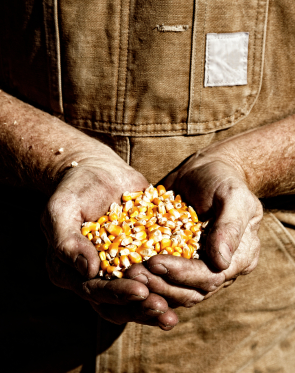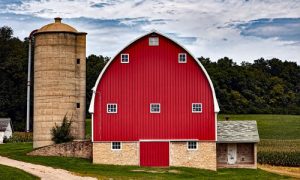Agriculture may seem like a simple job. Prepare the soil, apply chemicals, plant, harvest, repeat. Right?
In fact, it’s a complicated endeavor in the best of circumstance. Farming is bedrock industry that is directly affected by weather, natural disasters, climate change, and market forces that landowners can’t control.
Farmers, at least those still running largely independent, smaller-scale operations, are business men and women. They are a compelling mixture of agriculture scientist, commodity producer, investor, accountant, equipment-repair expert, geneticist, animal husbandry authority, soil conservationist and risk-taker.
Think of the challenges. Today’s farmers need to choose from among a dizzying array of seeds, many genetically modified. They buy elaborate combines worth more than many Midwestern homes. They have to decide how much to spend on inputs – fertilizer and chemicals – and how best to keep those essential elements on the field and out of the rivers.
They use manure – you’ll hear the term ‘biosolids’ sometimes – as fertilizer to save money. The material is knifed into the soil to help keep it close to the crops.Long before computers became a mainstay of most American households, many Midwest farm houses had a special, dedicated machine that delivered forecasts. The skies are part of the gamble. Grain farmers apply fertilizer, sometimes in the fall and always in the spring, with the hope that Mother Nature won’t wash away the food before the hungry seeds need it.
Whether that happens depends on rainfall. And the climate is changing, adding more financial risk to farming, ranching, and orchard work.
Climate change threatens to change the usual pattern. Iowa, one of the premier grain-growing states, will become more like southern Kansas or northern Arkansas if the climate modelers are correct. That means drier, and hotter. And more prone to drought.
But the Midwest also could be flooded more. Rain is expected to come more in deluges, rather than sprinkles, raising the risk of floods that can ruin crops. Pests used to doing their damage in southern climes may move north, forcing seed companies to engineer new traits capable of fighting them.
With all those challenges though, comes promise. Scientists are looking for crops that can produce more grain with less fertilizer – good for farmers’ wallets and for the environment. There is talk of corn varieties that could be grown farther north. And grain crops may one day be mainstays in the genetic work needed to create new medicines.
The value of corn alone has grown by three- or four-fold in recent decades as demand grew both feed the world’s skyrocketing population and to produce ethanol.
That may seem like long-overdue good news for the farmers – who for what seemed like decades got paid the same price while soda makers who use corn sweeteners got bigger paycheck by raising product prices. But increases in grain prices are bad news for farmers who feed cattle and hogs, for example. Higher corn prices mean higher meat prices at the grocery store, typically. And the fledgling ethanol industry suffered an almost immediate shakeout when the price of corn, the main feedstuff for today’s biofuels industry, spiked.
Another new complication: regulations. Though farmers are a politically powerful lobby – don’t forget Iowa hosts the first presidential caucus of each season – they are having a hard time fighting off challenges in Washington, D.C. Taxpayers are rebelling against aid payments to farms that are enjoying those high grain and meat prices. They wonder why farms are exempt from so many environmental regulations that apply to virtually every other major industry. Can you imagine if 3M decided to spread a byproduct across the landscape without a permit, as most farmers do with both synthetic fertilizers and manure? And what if the firm wasn’t held accountable for direct damage to streams? Farmers often aren’t.
Some of those issues are accompanied by the trend to large-scale livestock confinements and feedlots, another big story.
Virtually every state has some kind of active agriculture. California is one of the heavyweights, with crops ranging from lettuce to wine grapes. Grain farms dominate the Midwest. Large-scale livestock farms, many of which are CAFOs, or confined animal feed operations, are prevalent and environmentally controversial from North Carolina to Iowa, Missouri to Utah. Sometimes the location of these facilities, and the lack of local governmental power to control their siting, sets off spirited political debates akin to when someone tries to find a spot for a new landfill or nuclear plant.
One of the nation’s oldest, most-valued industries – agriculture – offers stories virtually anywhere, from the cranberry operations of Michigan to New England syrup operations, from the Corn Belt of the Midwest to the ranches of Texas and Wyoming and the vineyards of California.
Agriculture is a business that is changing rapidly in ways that offer even more stories. The resources are rich and local. It is fertile journalistic ground, indeed.










